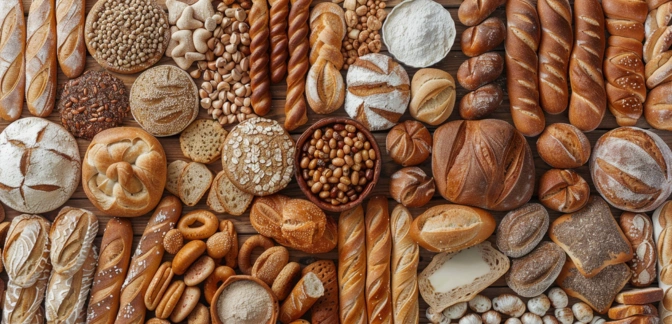Potato Flour — Nutrients, Health Benefits, And Shopping Tips

Written by Listonic Team
Last update on September 4, 2024
Potato flour nutrients
Nutrition facts
Amount per 100 g
Calories
🔥 357 kcal
| Nutrition per: 100 g | Value | % Daily Value* |
|---|---|---|
| Carbs | 83 g | 30.18% |
| Fiber | 6 g | 21.43% |
| Sugars | 0 g | - |
| Glycemic Index | 95 | - |
| Protein | 7 g | 14% |
| Sodium | 30 mg | 1.3% |
| Total Fat | 0 g | - |
*The % of Daily Value (DV) tells you how much a nutrient in a serving of food contributes to a daily diet. 2,000 calories a day is used for general nutrition advice.
6 g
🥔 Good Fiber Content
Potato flour facts & tips
Health benefits
- Gluten-free, making it suitable for individuals with celiac disease or gluten intolerance.
- High in fiber, promoting digestive health, regular bowel movements, and maintaining a healthy gut microbiome.
- Rich in vitamins and minerals such as Vitamin C, potassium, and B vitamins, which support overall health and well-being.
- Provides sustained energy from complex carbohydrates, making it a good source of fuel for the body and brain.
Health risks
- High carbohydrate content which can cause rapid spikes in blood sugar levels, particularly concerning for diabetics when consumed in large quantities.
- Low nutrient density compared to whole potatoes, as potato flour is primarily starch with limited vitamins or minerals.
- Potential for digestive discomfort such as bloating or gas when consumed in large quantities, particularly in individuals sensitive to starchy foods.
- Potential for overconsumption due to its versatile use in baking and cooking, leading to excessive calorie intake if not mindful of portion sizes.
How to choose potato flour
Potato flour should have a fine, powdery texture and a slight earthy smell, indicative of good quality and freshness. It should be white or off-white in color, free from any yellowing or clumping.
Avoid potato flour that smells musty or has a clumpy texture, as this could indicate moisture exposure, which can lead to spoilage. Packages that are not sealed properly should also be avoided, as the flour inside may not be suitable for use.

How to store potato flour
Potato flour should be stored in an airtight container in a cool, dry place. Proper storage maintains its quality and extends its shelf life for up to a year.
Exposure to moisture can cause potato flour to clump and spoil. Avoid storing near heat sources or in humid environments. Ensuring the container is tightly sealed prevents contamination and keeps the flour fresh.
✅ Extra Tip
How long does it last?
Potato flour can last for 1-2 years when stored in an airtight container in a cool, dark place. Proper storage helps maintain its quality and effectiveness.
What to do with leftovers?
Leftover potato flour can be used in a variety of culinary and non-culinary ways. In the kitchen, potato flour is a versatile thickening agent that can be used in soups, sauces, gravies, and baked goods. It’s also useful for coating foods before frying, giving them a crispy texture. Potato flour is often used in gluten-free baking as a substitute for flour.
Beyond cooking, potato flour has several practical uses. It can be used in DIY beauty treatments, such as mixing it with water to create a soothing face mask that helps absorb excess oil. Potato flour can also be used as a natural dry shampoo, helping to absorb oil from the scalp and freshen up hair. Additionally, potato flour can be used in crafting to create homemade play dough or mixed with water to create a non-Newtonian fluid for fun science experiments with kids. It can also be used as a natural remedy for soothing skin irritations or rashes when applied as a paste.
👨⚕️️ Medical disclaimer
Discover products from other categories
Listonic Team
Fact-checked
Our editorial team checked this article to make sure it was accurate at the time of publishing it.
Get the top-rated shopping list app

potato flour
1 piece
Outline







